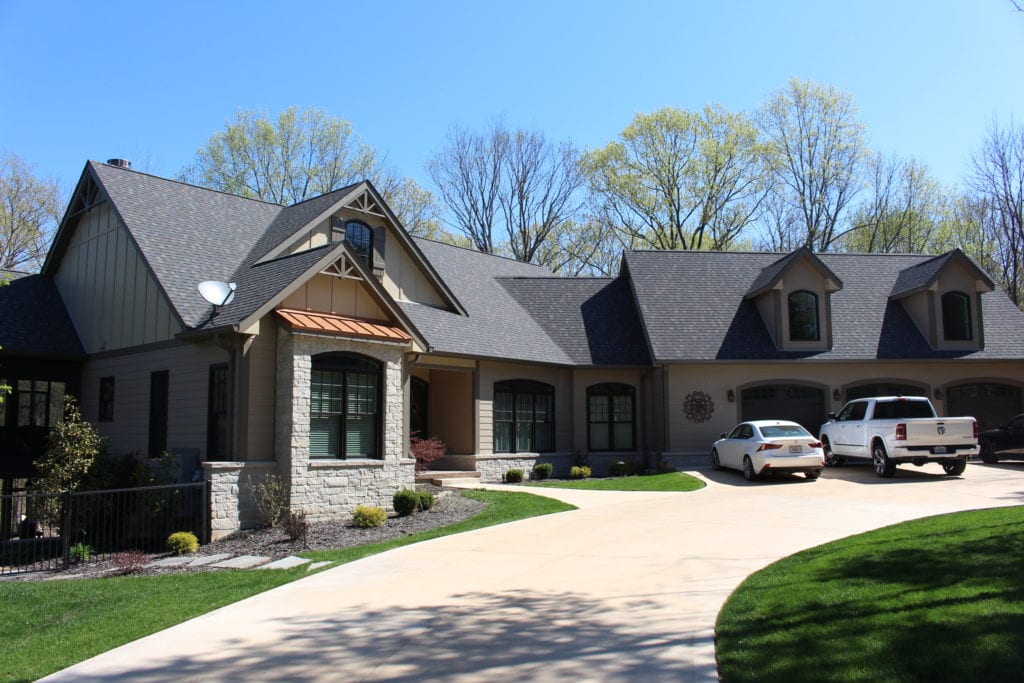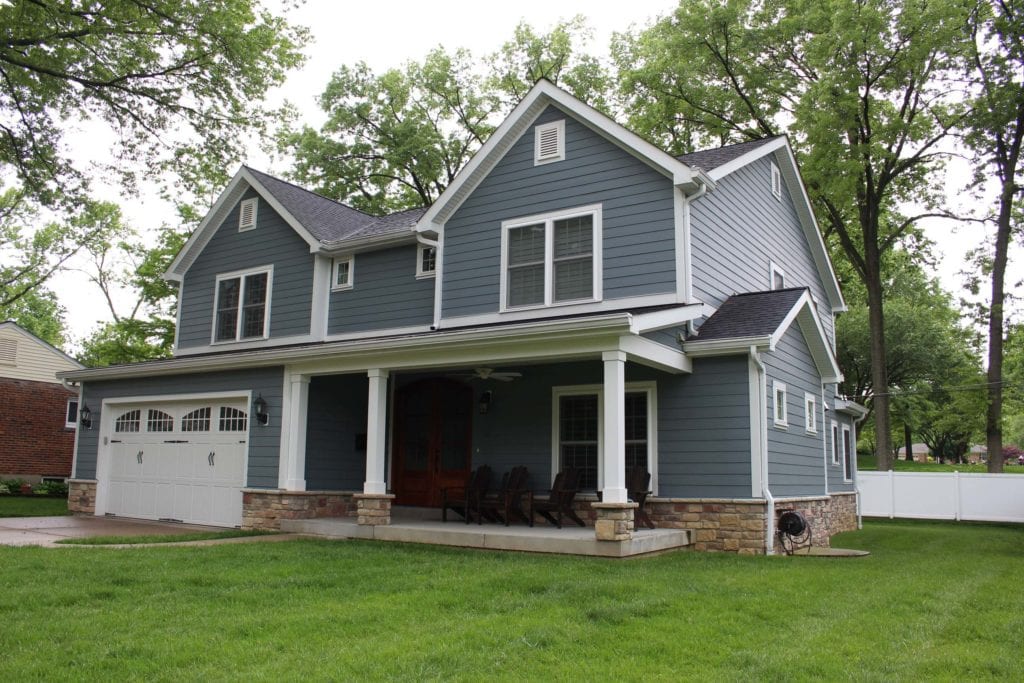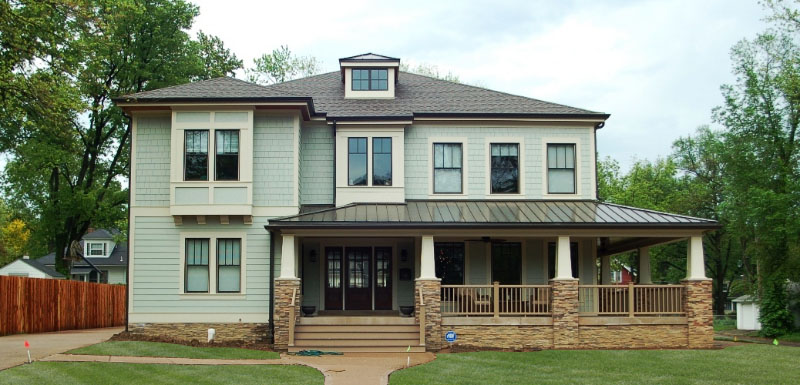How to Choose the Right Siding for Your Home
One of the first things people notice when seeing your house for the first time is, well, what it looks like. Perhaps even subconsciously, visitors will take in the state of your roof, landscaping, and siding, forming a first impression of your house.
As much as we’d like to think that we don’t judge a book by its cover, as humans, we do it naturally. If your home’s siding is faded, cracked, and showing other signs of wear and tear, it’s one of the first things people will notice.
What kind of first impression is your home’s siding making?
Generally, you’ll know when it’s time to replace your siding. But how do you choose the right siding for your home? Read through this comprehensive guide to learn how to make the right choice for your needs.

Things to Consider When Replacing Your Siding
Before you replace your siding, you’ll want to think about certain factors that will influence your decision.
Climate and Region
What’s the general weather like in your city? Different types of siding can withstand different types of weather, so a home in a tropical climate would have different needs than one in an area with frigid winters.
Here in Missouri, we’re fortunate enough to enjoy all four seasons, from the hot and humid summers to the freezing cold winters. So, homes in our area need a siding material that can withstand the changing weather year-round.
Budget
Before starting any home renovation project, you need to have a full understanding of your budget. How much are you comfortable spending? Knowing the answer to this will help you choose a siding material.
Once you start meeting with potential contractors, be upfront about your budget so you’re on the same page from the very beginning.
Wants vs. Needs
You’ll also need to be honest with yourself in terms of your wants vs. your needs. While you may love the look of a certain siding, it might not fit your budget or it might require more maintenance than you have time to handle.
Additionally, you might end up having to weigh the benefits of a beautiful, head-turning aesthetic vs. something that gets the job done for the right prices and decide which is more important to you. Fortunately, there are some materials on the market – like James Hardie Siding – that are both functional and beautiful.
Energy-Efficiency
Are you looking to reduce your carbon footprint? When trying to decide on a siding material, pay attention to its R-value. According to Modernize, “The higher R-value a material has, the better it is at insulating. And while building codes generally require a R-value of 13 for a home’s walls as a whole, siding alone typically rates less than a 1 on this scale.”
Here’s a closer look at the R-value of some popular siding options:
- Wood Shingle Siding: R-value of 0.87
- Beveled Wood Siding: R-value of 0.81
- Non-Insulated Aluminum, Steel, or Vinyl Siding: R-value of 0.61
- Brick or Stone Siding: R-value of 0.44
- 2-inch Stucco: R-value of 0.40
- Fiber Cement Siding: R-value of 0.37
- 1-inch Brick or Stone Veneer: R-value of 0.11
Durability and Maintenance
Are you an avid “DIYer” or more of a “set it and forget” type of person? If you’d rather not have to think about your siding apart from occasionally rinsing it down, you’ll want to look for a siding option that is relatively low maintenance.
However, if you thrive on getting outside and taking care of your home, then you might be fine choosing a siding material that requires more attention. There’s no wrong answer; it all depends on how much time you’re comfortable spending on the upkeep of your home.

Different Types of Siding Options to Consider
Now that you know which factors are most important to consider, let’s take a closer look at some of the most popular types of siding materials available.
James Hardie Fiber Cement Siding
Here at Siding Express, James Hardie Fiber Cement Siding is one of the most popular siding options with our customers.
About James Hardie Fiber Cement Siding
Fiber cement is an innovative material that combines wood fiber, Portland cement, sand, and water to create a sustainable material that looks like wood but lasts far longer and requires minimal maintenance.
With a variety of styles and designs available, there’s a James Hardie Siding option to fit every aesthetic.
Pros of James Hardie Fiber Cement Siding
- Fiber cement is an extremely durable material that is designed to withstand the elements.
- This siding option requires very little maintenance.
- There are numerous colors and styles available, including HardiePlank® Lap Siding, HardieShingle® Siding, and HardiePanel® Vertical Siding.
- There are energy-efficient, insulated options available.
- Fiber cement siding is extremely resistant to pests, rot, and moisture.
Cons of James Hardie Fiber Cement Siding
- It can be a bit more expensive than other siding options.
Want to see real examples of James Hardie Fiber Cement Siding? Look through our gallery of completed projects.
Stone Veneer Siding
About Stone Veneer Siding
Another popular option, stone veneer siding is a faux-stone wall material that is added on top of existing concrete or wood siding. Most often, this material is added on the lower portion of exterior walls.
Pros of Stone Veneer Siding
- It’s known for its long-lasting durability.
- Stone veneer siding requires very little maintenance.
- It’s a popular style that looks great and timeless.
- Stone veneer siding typically has a high return on investment.
Cons of Stone Veneer Siding
- Like fiber cement siding, it can be a more expensive option and repairs can be expensive too.
Vinyl Siding
About Vinyl Siding
Another popular option with our customers, vinyl siding comes in a variety of design options, so you’re sure to find a style you love. Choosing vinyl siding is a cost-effective way to remodel the exterior of your home. This siding option will protect your home from the elements and it comes in a variety of design options including clapboard, board and batten, shake, beaded, and shiplap.
Pros of Vinyl Siding
- Vinyl siding is a great value, especially compared to other types of siding.
- It is extremely low-maintenance.
- It’s made to be very durable and can handle all four seasons.
Cons of Vinyl Siding
- Some people don’t like the look of vinyl siding compared to other siding options.
Want to see real examples of vinyl siding? Look through our gallery of completed projects.
Wood Siding
About Wood Siding
Wood siding is a popular choice that gives your home a nice, traditional look. However, as other types of siding become more popular, wood siding may begin to look more outdated.
Pros of Wood Siding
- Wood siding is considered a timeless look.
- When maintained properly, it can be a durable material.
Cons of Wood Siding
- Wood siding typically requires the most maintenance and upkeep.
- Unfortunately, wood siding is more prone to attracting pests like termites and carpenter ants.
Here for All of Your Siding Needs
Now that you have a better understanding of what to consider before updating your home’s siding and the different materials available to you, it’s time to find the right contractor for the job.
Siding Express is here to help you transform your home with new siding. For more than a decade, we’ve been serving homeowners like you in the greater St. Louis area and we’d love to work with you next.
Take a moment to read through feedback from our past customers to learn more about what to expect when you work with our team. Then, when you’re ready, schedule a time to meet with us for a free, no-obligation consultation.
We’ll be here to answer all of your siding questions and help your home make a great first impression for years to come.

